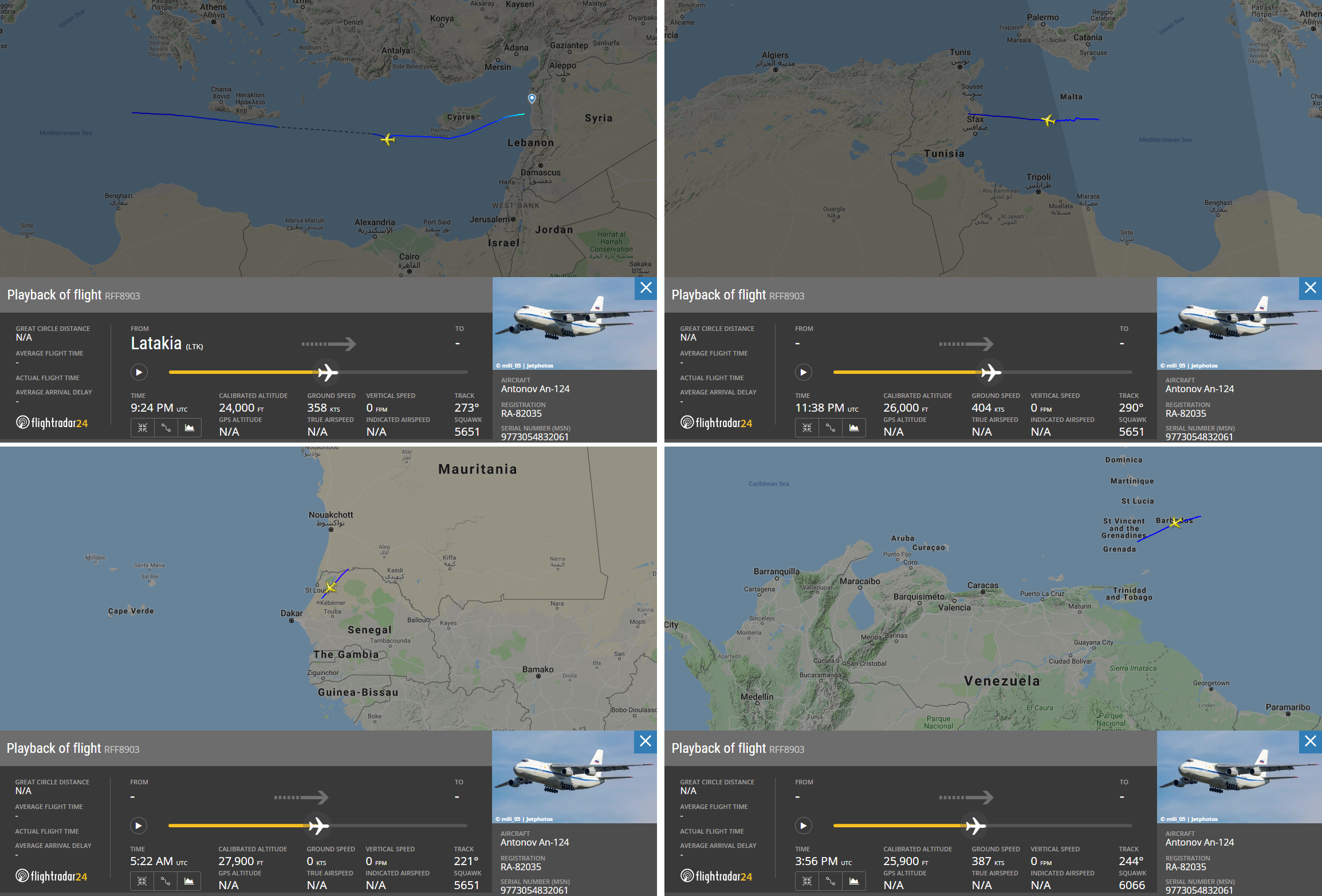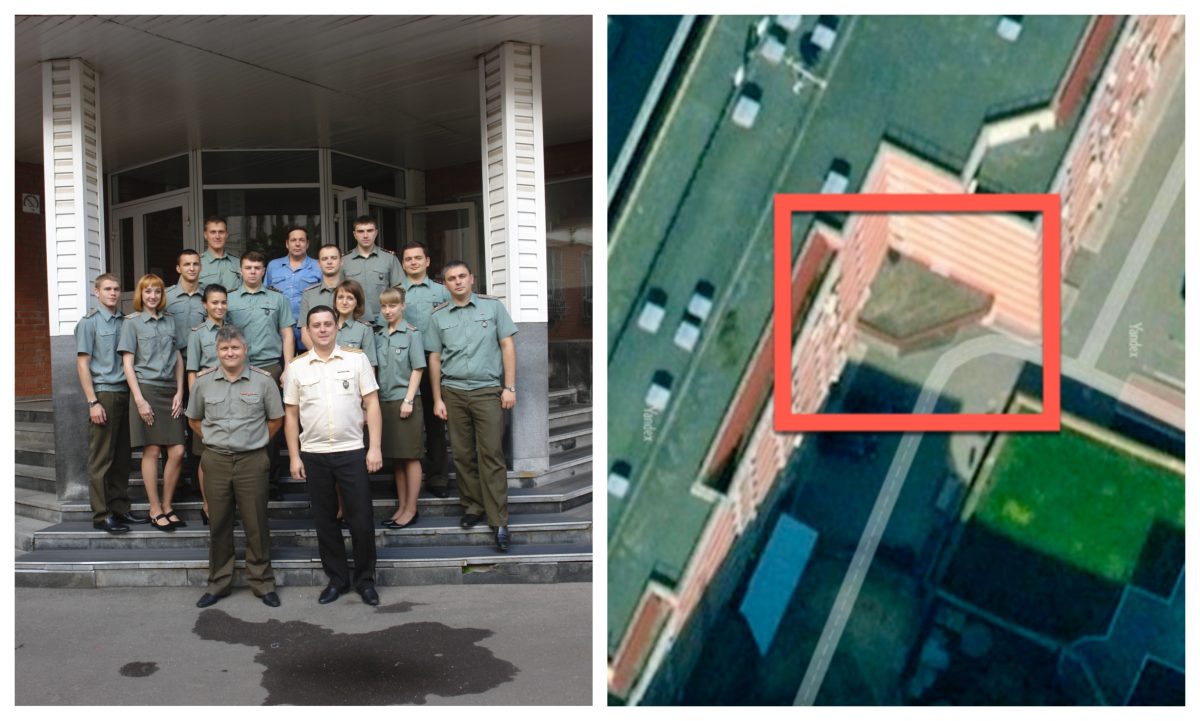Russians In Venezuela: What We Know So Far
On March 23, 2019, Twitter lit up with a series of images showing two Russian aircraft at the Simón Bolívar International airport just north of Caracas, Venezuela. The images also showed a group of individuals in uniform disembarking from one aircraft, and cargo being unloaded from the other.
Maria Zakharova, the spokeswoman for the Russian Foreign Ministry, later said that the individuals were “specialists” who had arrived in the country as part of a bilateral “military-technical cooperation agreement” between Moscow and Caracas, and that they would stay in the country “for as long as the government of Venezuela needs them.”
Given the political tension in Venezuela, the arrival of Russian personnel reverberated through both local and international media
On January 23 of this year, Juan Guaidó, the head of the National Assembly, claimed the title of interim president after the legislature found president Nicolás Maduro to have “usurped” the position following a highly contentious election last year. Since then, Maduro has been facing calls to step down as president of Venezuela, and to allow free and fair elections to take place in order that he be replaced.
Guaidó’s January 23 declaration also had the effect of splitting the international community into two camps. While the United States, much of the Lima Group, and several European countries have recognized Guaidó as Venezuela’s legitimate president, Russia, China and Cuba have sided with the status quo under Maduro.
Within this context, the arrival of Russian personnel on March 23 is a sign of Moscow’s continuing support for Maduro during a critical stage in his presidency.
The Facts
On March 23, two Russian aircraft landed at the Simón Bolívar international airport in Maiquetia, located north of Caracas. The aircraft were:
Both flights were tracked on their journeys to Venezuela by Twitter user @YorukIsi. Both aircraft headed from Syria to Senegal, with the Il-62 having arrived in Syria from Moscow on March 22. Once in Senegal, @YorukIsik correctly predicted that the planes would continue towards Venezuela based on similar trips made by Russian aircraft in the past.
A summary of each aircraft’s flight to Venezuela follows below.

From left to right: The Il-62 departs from Syria heading across across the Mediterranean Sea starting at approximately 8:23 PM UTC on March 22; enters Senegalese airspace shortly before 4:35 AM UTC on March 23; and flies just south of the island of Barbados heading towards Venezuela at approximately 1:10 PM UTC on March 23 (Images courtesy of Flightradar24)

From left to right: The An-124 departs from Syria heading west across the Mediterranean Sea starting at approximately 8:37 PM UTC on March 22; enters Senegalese airspace at approximately 5:15 AM UTC on March 23; flies just south of the island of Barbados heading to Venezuela at approximately 3:57 PM UTC on March 23 (Images courtesy of Flightradar24)
Images of the two airplanes after their landing:
Hoy llegaron al aeropuerto Internacional de Maiquetía estos dos aviones de la Fuerza Aerea rusa.
1 Ilyushin Il-62M
1 Antomov 124Fotos: cortesía pic.twitter.com/w7hgQhyivr
— Federico Black B. (@FedericoBlackB) March 23, 2019
The Il-62 landed at the Simón Bolívar International airport before the An-124. The video below shows the An-124 arriving at the airport; at the end of the clip, the Il-62 is visible, already stationary on the ramp:
#Vargas | Una de las aeronaves rusas que aterrizó en Maiquetía el viernes #22Mar, el avión de carga Antonov An-124, matrícula RA-82035, despegó la mañana de este domingo con destino a Moscú #24Mar – vía @nadeska16 video: cortesía https://t.co/OIOOyz3QWJ pic.twitter.com/Mgd57CJwYZ
— El Pitazo (@ElPitazoTV) March 24, 2019
When they were photographed, the two aircraft were located in a section of the airport (blue box below) near the presidential hangar, which is used to receive foreign dignitaries (for a detailed geolocation of the aircraft, see this article by DFRLab):

The Simón Bolívar international airport. The area where the two aircraft were photographed is highlighted by the blue box. Note the red carpet on the right side of the image indicating the location of the presidential hangar (Images courtesy of Google Earth/DigitalGlobe)
Based on the open source information available, the Il-62 brought to Venezuela at least two dozen individuals, with media reports claiming that approximately 100 of them arrived.
The An-124 unloaded its cargo unto trucks that were waiting on the airport ramp:
En esta foto (también cortesía) se observan camiones descargando el Antonov 124 de la Fuerza Aerea Rusa que llegó hoy a Maiquetía. pic.twitter.com/OZ4FLp6jRp
— Federico Black B. (@FedericoBlackB) March 23, 2019
The S-300VM
In a Twitter thread, @SerbinPont connected the arrival of Russian personnel with imagery released by @ImageSatIntl (iSi). According to iSi, an image dated March 20 shows S-300VM anti-aircraft missile system activity at the Capitán Manuel Ríos Airbase in Guárico state:
#Followup: #Venezuela has put the #S300 into #operational readiness, after conducting drills in February 2019 (as reported previously by #ISI).#Colombia #intelligence #Satellite #military #defence #defense #MaduroRegime #Update #imagery pic.twitter.com/JerkoIcozn
— ImageSat Intl. (@ImageSatIntl) March 24, 2019
iSi also detected the S-300VM system at the airbase back in February of this year:
iSi #Intelligence Summary – https://t.co/FWqmIYSdJP#Venezuela: A month of military preparations. Will there be a confrontation?
***#ISI shows a parallel between the beginning of the crisis in Venezuela and the heightened #alert in the #military's #S300 unit.#Satellite #space pic.twitter.com/yoYNVmdnUR— ImageSat Intl. (@ImageSatIntl) March 25, 2019
@SerbinPont proposed a theory that the arrival of Russian personnel might be connected to the operation of the S-300VM, and pointed out that from the airbase the system can cover Venezuelan population centers, including Caracas and Valencia, as well as other military installations.
Maduro’s predecessor, Hugo Chavez, purchased an unspecified number of S-300VM systems from Russia in 2009, reportedly as part of an agreement that involved a loan of $2 billion from Moscow. The S-300VM made its first public appearance in Venezuela during a military parade in Caracas on April 19, 2013. More recently, the S-300VM participated in a military parade in the capital on July 5, 2018.
At this time, there is no open source information available that conclusively points to a connection between the arrival of Russian personnel and the operation of the S-300VM in Venezuela.
Previous Connections
A check of Flightradar24 shows that the Il-62 (RA-86496) and the An-124 (RA-82035) have been to Venezuela before.
The Il-62 was in the country briefly on March 2 and 3 of this year. The airplane was also in Venezuela on December 10, 2018, accompanying two Tu-160 strategic bombers and the An-124 (RA-82035). The four aircraft were welcomed at the Simón Bolívar International Airport by the head of the Venezuelan military, and were in the country only briefly.
Here is a tweet from the official Venezuelan Army Twitter account showing the bombers, the Venezuelan delegation that welcomed them, and their Russian counterparts:
#Hoy?| Arriba a la Patria, comisión de la Fuerza Aeroespacial del Federación de Rusia, en el marco de los vuelos operativos combinados con ese hermano país. Fortaleciendo la cooperación militar, adiestramiento y capacitación entre ambas naciones. ????. pic.twitter.com/00TTqZFkda
— Ejército Bolivariano (@EjercitoFANB) December 10, 2018
The four aircraft appear in the satellite image below on their December 10, 2018 visit to Venezuela:
#Russia considers to deploy strategic bombers full time in #Venezuela, @nezavisimaya_g reports. Currently, several Russian jets (2 Tu-160s, An-124, IL-62) are on display near Caracas in what was seen as symbolic support for Maduro. ? @DigitalGlobe https://t.co/oB8e5BNaMa pic.twitter.com/HOZkCTcTpS
— Christiaan Triebert (@trbrtc) December 12, 2018
The two Tu-160, the An-124, and the Il-62 were photographed at the Simón Bolívar International Airport during that visit:
? Miren todos esos aviones en maiquetia!!
Me las pasó un amigo piloto hoy
Son aviones rusos
y bombarderos rusos
Aviones de carga y bombarderos.
Qué tal! De qué se tratará todo esto? Alguien tendrá información al respecto? pic.twitter.com/7Q5OuNkOOg— ?Gladyola? (@gladysreyes56) December 10, 2018
Analysis
The presence of Russian “military-technical” personnel in Venezuela for an indefinite period of time makes Venezuela a possible geopolitical flashpoint, as it runs contrary to the local interests of the United States.
The White House has responded to the arrival of Russian personnel tersely. On March 25, Secretary of State Mike Pompeo had a telephone conversation with Russian Foreign Minister Sergey Lavrov during which he reportedly told him that the United States would not “stand idly by as Russia exacerbates tensions in Venezuela.” On March 27, U.S. President Donald Trump said that “Russia has to get out” of Venezuela, while VP Mike Pence called the arrival of the personnel an “unwelcome provocation”.
Most recently, the White House issued a statement on March 29 calling the deployment of “Russian military personnel and equipment” in Venezuela “a direct threat to international peace and security in the region.”
Russia has meanwhile defended its move, saying that it adheres to “bilateral and international legal frameworks” for cooperation. On March 29, the Rostec Russian state-owned company announced that it had opened a training center for helicopter pilots in Venezuela. There is no open source evidence available to help verify whether the arrival of the Russian personnel on March 23 and the opening of the training center are related.
The arrival of Russian personnel is the clearest sign yet that the Russian government is willing to continue to lend support to beleaguered President Maduro. While Russia has been an important financial resource for the Maduro government in the past, this new visit, conducted in such a visible manner, is also likely a signal to the international community that Moscow is still on Maduro’s side.


